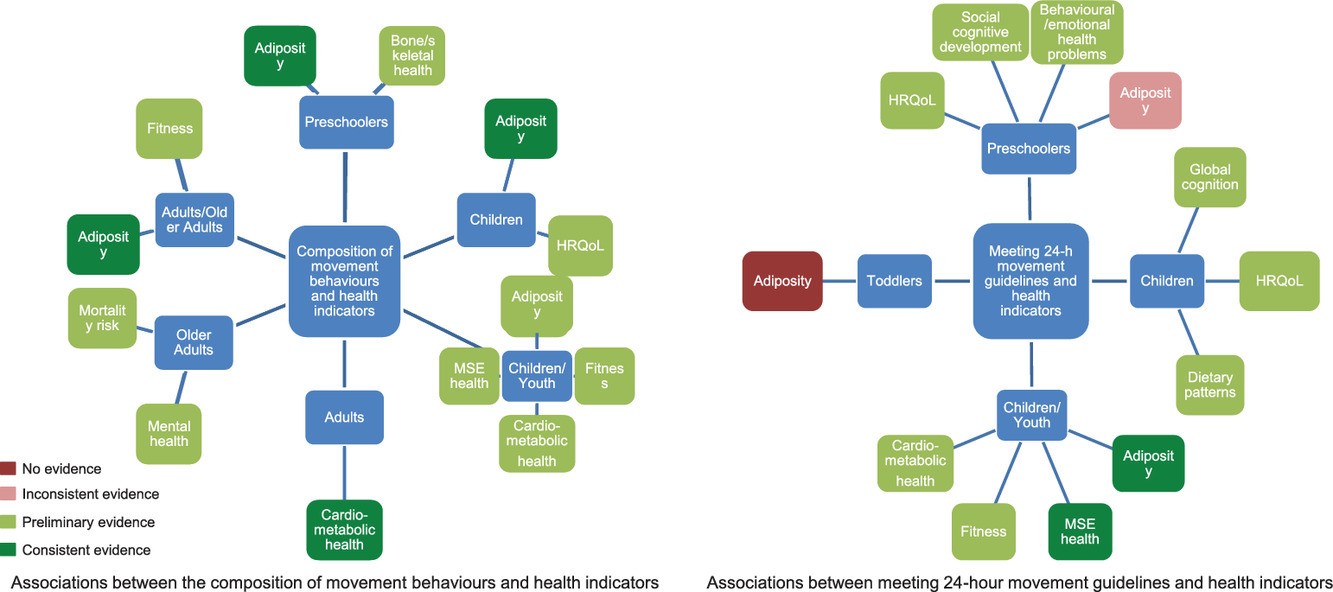HALO Post-Doctoral Fellow Dr. Scott Rollo, PHD student Olga Antsygina and HALO Director Dr. Mark Tremblay just published a paper, “The whole day matters: understanding 24-hour movement guideline adherence and relationships with health indicators across the lifespan,” in the Journal of Sport and Health Science. Citation details and a summary of the paper are below.
Congratulations, Scott and team!
Rollo S, Antsygina O, Tremblay MS. The whole day matters: Understanding 24-hour movement guideline adherence and relationships with health indicators across the lifespan. J Sport Heal Sci. 2020;9(6):493-510. doi:10.1016/j.jshs.2020.07.004
Abstract
Background: New research suggests that the composition (mix) of movement behaviors within a 24-h period may have important implications for health across the lifespan. Consistent with this integrated movement behavior paradigm, a number of countries across the world have developed and released 24-h movement guidelines for specific age groups. The purpose of this systematic review was to examine the associations between the 24-h time-use composition of movement behaviors, or adherence to 24-h movement guidelines, and multiple health indicators across the lifespan.
Methods: Five online databases (PsycINFO, PubMed, SPORTDiscus, Web of Science, and Ovid MEDLINE) were searched for relevant peer-reviewed studies published between January 2015 and January 2020 that met the a priori inclusion criteria, with no study design limits. The methodological quality of research evidence for each individual study and for each health indicator was assessed using a modified version of the Downs and Black checklist.
Results: A total of 51 studies from 20 different countries met the inclusion criteria. A total of 31 studies examined adherence (meeting vs. not meeting) to 24-h movement guidelines, and 20 studies used compositional analyses to explore the 24-h time-use composition of movement behaviors. Findings indicated that meeting the 24-h movement guidelines were (i) not associated with adiposity among toddlers, (ii) favorably associated with health-related quality of life, social-cognitive development, and behavioral and emotional problems among preschoolers, (iii) favorably associated with global cognition, health-related quality of life, and healthy dietary patterns in children, and (iv) favorably associated with adiposity, fitness, and cardiometabolic, mental, social, and emotional health among children and youth. Significant associations were also found between the composition of 24-h movement behaviors and indicators of (i) adiposity and bone and skeletal health among preschoolers, (ii) health-related quality of life among children, (iii) adiposity, fitness, and cardiometabolic, social, and emotional health among children and youth, (iv) cardiometabolic health in adults, (v) adiposity and fitness among adults and older adults, and (vi) mental health and risk of mortality among older adults. The quality of the available evidence ranged from “poor” to “good”.
Conclusion: The current evidence indicates that the composition of movement behaviors within a 24-h period may have important implications for health at all ages and that meeting the current 24-h movement guidelines is associated with a number of desirable health indicators in children and youth. Future studies should employ longitudinal and experimental designs, include valid and reliable measures of 24-h movement behaviors, and examine a wide array of health indicators across all age groups. Such studies would confirm the results from the primarily cross-sectional evidence drawn from studies included in our review and further advance our understanding of the relationships between 24-h movement behaviors and health.
Graphical Abstract

Click here to read the full article for free.




